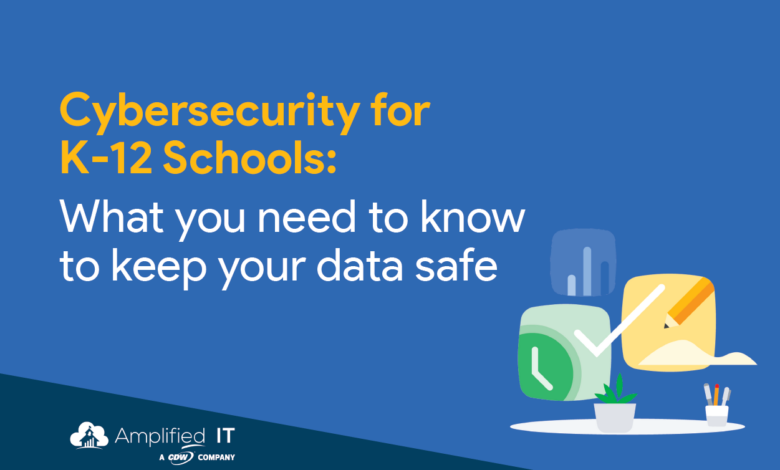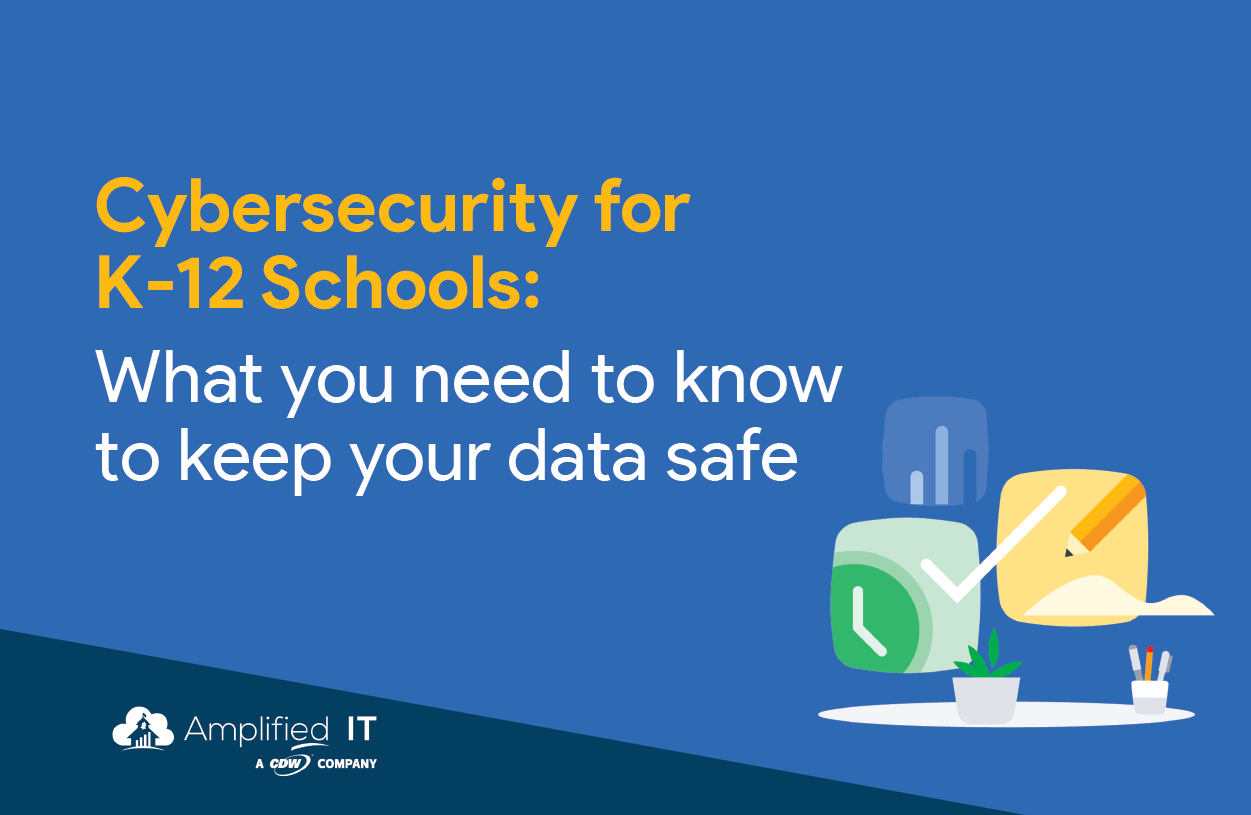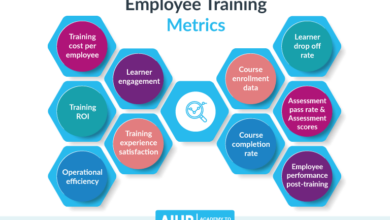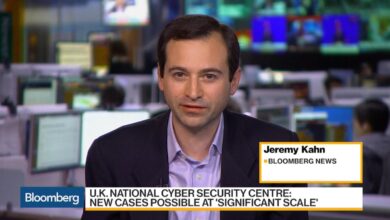
How K-12 Tech Teams Can Share Cybersecurity Responsibility
How k 12 tech teams can share responsibility for cybersecurity – How K-12 tech teams can share responsibility for cybersecurity is a crucial question for today’s schools. It’s not just about having a single “cybersecurity person”—it’s about building a culture of shared responsibility where everyone plays a part in protecting sensitive student and school data. This means defining clear roles, establishing strong communication channels, and implementing effective training programs.
We’ll explore how to make this happen, from creating a practical framework for distributing tasks to managing security incidents effectively.
Think of it like a well-oiled machine: each part, from the network administrator to the help desk, has a specific function, but they all work together seamlessly to keep the system running smoothly and securely. We’ll delve into practical strategies, from choosing the right security tools to creating engaging training materials that actually stick. This isn’t about adding extra work; it’s about streamlining processes and making cybersecurity a collaborative effort.
Defining Roles and Responsibilities
Sharing cybersecurity responsibility across a K-12 tech team isn’t just about dividing tasks; it’s about leveraging individual expertise to create a robust defense. A clear understanding of roles and responsibilities is crucial for effective collaboration and accountability. This ensures that everyone understands their contribution to the overall security posture of the district’s network and systems.A well-defined framework allows for efficient task delegation, minimizing overlap and maximizing the impact of each team member’s skills.
This approach is especially vital in K-12 environments where resources are often limited, and the need for proactive security measures is paramount. By assigning responsibilities based on expertise, we can ensure that the most qualified individuals handle the most critical tasks.
Roles and Their Inherent Cybersecurity Responsibilities
Different roles within a K-12 tech team have varying levels of cybersecurity responsibility. This section Artikels the typical roles and their inherent security duties. It’s important to note that these responsibilities may overlap and adapt based on the specific size and structure of the district’s IT department.
| Role | Cybersecurity Responsibilities | Example Tasks | Accountability |
|---|---|---|---|
| Network Administrator | Maintaining network security infrastructure, implementing firewalls and intrusion detection systems, managing network access control. | Firewall rule updates, vulnerability scanning, network segmentation, incident response. | Network uptime, security incident mitigation. |
| Help Desk Technician | First line of defense against phishing attempts, password resets, user education on security best practices. | Responding to user security concerns, reporting suspicious activity, enforcing password policies. | User security awareness, initial incident reporting. |
| Instructional Technologist | Ensuring safe and responsible use of educational technology, promoting digital citizenship, assisting teachers with secure online learning environments. | Training teachers on safe online practices, implementing appropriate filtering and monitoring tools, managing student access to online resources. | Safe and ethical technology use by students and staff. |
| System Administrator | Managing and securing servers, databases, and other critical systems, patching vulnerabilities, implementing data backup and recovery procedures. | Regular system patching, access control management, data encryption, security audits. | System integrity, data protection. |
Framework for Distributing Cybersecurity Tasks
A successful cybersecurity strategy relies on a well-defined framework for task distribution. This framework should consider individual skill sets and expertise to optimize efficiency and effectiveness. The following principles guide this distribution:* Prioritize based on risk: Critical systems and data require the attention of highly skilled personnel.
Delegate based on expertise
Assign tasks to individuals with the necessary skills and experience.
Document procedures
Create clear, documented procedures for all cybersecurity tasks to ensure consistency and maintainability.
Regular training and updates
Ongoing training ensures that team members stay current on the latest threats and best practices.
Cybersecurity Accountability Chart
The following chart illustrates clear lines of accountability for various cybersecurity functions. This helps to prevent ambiguity and ensure that responsibilities are clearly defined. It serves as a visual representation of the framework described above.
| Cybersecurity Function | Primary Responsible Party | Secondary Responsible Party | Reporting Mechanism |
|---|---|---|---|
| Firewall Management | Network Administrator | System Administrator | Weekly security reports |
| Vulnerability Scanning | Network Administrator | System Administrator | Monthly vulnerability reports |
| Incident Response | Network Administrator | Help Desk Technician (initial response) | Incident report to IT Director |
| User Security Training | Instructional Technologist | Help Desk Technician | Training completion reports |
Establishing Communication and Collaboration Protocols
Effective communication and collaboration are the cornerstones of a robust K-12 cybersecurity posture. Without a clearly defined system for sharing information and escalating issues, even the best security measures can fail. This section Artikels strategies for building a proactive and responsive communication network across your tech teams.A well-structured communication plan is crucial for quickly identifying, responding to, and mitigating cybersecurity threats.
This involves establishing clear channels for reporting incidents, disseminating security alerts, and coordinating responses across different departments. A lack of clear communication can lead to delays in addressing critical vulnerabilities, increasing the potential damage from cyberattacks.
Communication Plan Design
A comprehensive communication plan should specify who is responsible for communicating what, to whom, and by what method. Consider using a combination of tools to ensure widespread reach and accessibility. For instance, a dedicated email list for security alerts, a secure messaging platform for urgent issues, and regular team meetings to discuss ongoing threats and vulnerabilities would provide a multi-faceted approach.
The plan should also Artikel procedures for communicating with external stakeholders, such as law enforcement or parents, in the event of a significant incident. Regular drills and simulations can help test the effectiveness of the communication plan and identify areas for improvement. For example, a simulated phishing attack can reveal gaps in communication during a real-world scenario.
Cybersecurity Issue Escalation Procedure
A clear escalation procedure is vital for handling cybersecurity incidents effectively. This should define the different levels of severity (e.g., low, medium, high, critical) and Artikel the steps to be taken at each level. For instance, a low-severity issue might be handled by the individual team member, while a critical incident would require immediate escalation to the district’s IT director and potentially external cybersecurity experts.
The procedure should also specify the individuals or teams responsible for each escalation step and the timeframes for responding to incidents at different severity levels. A well-defined escalation path ensures that critical issues are addressed promptly and prevents minor issues from escalating unnecessarily. For example, a simple password reset request can be handled by the help desk, while a suspected ransomware attack needs immediate attention from the incident response team.
Cybersecurity Activity and Responsibility Documentation
Maintaining meticulous records of all cybersecurity activities and responsibilities is crucial for accountability, compliance, and continuous improvement. This includes documenting security incidents, responses, vulnerability assessments, security awareness training, and any changes made to security policies or procedures. A centralized system, such as a shared database or a dedicated security information and event management (SIEM) system, can help track and manage this information efficiently.
Regular audits of these records can help identify areas where security practices can be improved. For instance, tracking the number of phishing attempts and successful breaches can inform future security awareness training programs. Furthermore, documenting all actions taken during an incident response helps in post-incident analysis and improvement of future response strategies.
Implementing Shared Security Tools and Processes

Centralizing and standardizing security tools and processes is crucial for K-12 tech teams to effectively manage the diverse cybersecurity challenges faced across a school district. A unified approach ensures consistent protection, simplifies management, and improves overall security posture. This requires careful selection of appropriate tools, development of standardized procedures, and a comprehensive training program for all team members.Effective implementation of shared security tools and processes necessitates a clear understanding of the available options and their suitability for the K-12 environment.
This includes considerations of budget, technical expertise, and the specific security needs of the district.
Security Tool Comparison
Choosing the right security tools is paramount. Different tools address different vulnerabilities. Firewalls control network access, preventing unauthorized connections. Intrusion detection systems (IDS) monitor network traffic for malicious activity, alerting administrators to potential threats. Endpoint protection software secures individual devices (computers, tablets, phones) against malware and other threats.
A layered approach, combining these tools, offers the most robust protection. For instance, a next-generation firewall (NGFW) can offer advanced threat protection beyond basic firewall functionality, while an endpoint detection and response (EDR) solution goes beyond traditional antivirus, providing real-time threat hunting and response capabilities. The specific needs of a K-12 district might favor cloud-based solutions for easier management and scalability.
Standardizing Security Practices
Establishing standardized security practices across departments requires a well-defined process. This begins with documenting existing procedures and identifying areas needing improvement. A central security team should lead the effort, developing consistent policies and procedures for password management, data backups, software updates, and incident response. Regular audits and reviews are vital to ensure adherence to these standards. For example, a standardized policy for acceptable use of school-owned devices could include clear guidelines on acceptable websites, social media usage, and data security.
This policy would then be applied consistently across all departments, regardless of their specific needs or technology used.
Security Training Program
A comprehensive training program is essential to ensure that all team members understand and effectively utilize the shared security tools and processes. This program should cover various aspects of cybersecurity, including the use of specific tools, incident response procedures, and security awareness training. Training should be delivered in various formats to cater to different learning styles, including online modules, workshops, and hands-on exercises.
Regular refresher courses should be implemented to address emerging threats and new technologies. For instance, the training could include simulated phishing attacks to educate staff on identifying and reporting such attempts. This would be supplemented by regular updates on emerging threats and best practices. The effectiveness of the training can be measured through regular assessments and feedback sessions.
Managing Security Awareness and Training

A robust cybersecurity posture in any K-12 environment relies heavily on the informed actions of its tech team. Neglecting security awareness training leaves the district vulnerable to preventable breaches. A comprehensive program ensures everyone understands their role in protecting sensitive student and staff data.A well-structured security awareness training program for K-12 tech teams goes beyond simple compliance. It fosters a security-conscious culture, proactively mitigating risks and strengthening the overall security posture.
This requires a multi-faceted approach incorporating various learning methods and regular reinforcement.
Comprehensive Security Awareness Training Program
The program should cover a range of topics relevant to the tech team’s roles and responsibilities. This includes phishing awareness, password management, social engineering tactics, malware prevention, data loss prevention, incident response procedures, and the district’s specific security policies. The training should be tailored to different roles within the team, acknowledging that a network administrator’s needs will differ from those of a help desk technician.
Engaging Training Materials
Effective training isn’t just about delivering information; it’s about making it memorable and actionable. Interactive modules, short videos, real-world case studies (e.g., discussing recent high-profile data breaches in education), and simulated phishing exercises can significantly improve engagement and knowledge retention. Gamification elements, like points or badges for completing modules, can also boost participation. The materials should use clear, concise language, avoiding technical jargon whenever possible.
Regular Updates and Effectiveness Assessment
Security threats constantly evolve. Therefore, the training program must be regularly updated to reflect the latest threats and best practices. This could involve incorporating new modules on emerging threats or revising existing ones to address vulnerabilities. Regular assessments, such as quizzes or simulated phishing campaigns, are crucial for evaluating the effectiveness of the training. Analyzing the results helps identify knowledge gaps and areas needing improvement, allowing for targeted adjustments to the program’s content and delivery methods.
For example, consistently low scores on a particular module might indicate a need for a revised approach or additional training on that specific topic. Tracking participation rates and feedback from participants can further enhance the program’s effectiveness.
Responding to Security Incidents
A robust incident response plan is crucial for any K-12 tech team. It’s not a matter of
- if* a security incident will occur, but
- when*. Having a well-defined plan in place, understood and practiced by all relevant personnel, minimizes damage and ensures a swift recovery. This plan should be a living document, regularly reviewed and updated to reflect evolving threats and the district’s changing technological landscape.
Effective incident response requires a multi-faceted approach, encompassing proactive measures, reactive strategies, and post-incident analysis. This involves clearly defined roles, established communication channels, and a commitment to continuous improvement. A failure in any one of these areas can significantly impact the effectiveness of the overall response.
Incident Response Plan Procedures
The incident response plan should detail procedures for each phase of a security breach. This includes detection (identifying the breach), containment (limiting the extent of the damage), eradication (removing the threat), recovery (restoring systems and data), and post-incident activity (review and improvement). For example, the detection phase might involve monitoring system logs for unusual activity, while containment could involve isolating affected systems from the network.
The plan should clearly Artikel who is responsible for each step and the escalation procedures for critical incidents. Regular drills and simulations are essential to ensure the plan’s effectiveness and familiarity among team members.
Communication Strategy During Security Incidents
A clear and consistent communication strategy is vital during a security incident. This involves identifying key stakeholders – administrators, teachers, parents, students, and law enforcement (where appropriate) – and establishing communication channels for each group. The plan should Artikel the information to be shared, the frequency of updates, and the designated communication personnel. Transparency and honesty are paramount; withholding information or downplaying the severity of the incident can erode trust and exacerbate the situation.
For example, a staged communication plan might involve an initial brief notification to key personnel, followed by more detailed updates to parents and students as the situation unfolds. The communication should always emphasize the steps being taken to address the incident and reassure stakeholders that their data and systems are being protected.
Post-Incident Review Process
Following a security incident, a thorough post-incident review is essential. This involves analyzing the incident’s root cause, evaluating the effectiveness of the response, and identifying areas for improvement in the overall cybersecurity strategy. This review should be documented and shared with relevant personnel to ensure lessons learned are incorporated into future plans and procedures. For instance, if the incident revealed a weakness in the network’s vulnerability scanning process, the review might recommend more frequent scans or the implementation of a more sophisticated vulnerability management system.
The review should also assess the effectiveness of the communication strategy and identify any areas where communication could be improved. The goal is to continuously refine the district’s cybersecurity posture and minimize the risk of future incidents.
Budgeting and Resource Allocation for Cybersecurity

Securing a K-12 school district’s digital infrastructure requires a dedicated budget and a well-defined plan for resource allocation. This isn’t just about purchasing software; it’s about investing in the long-term safety and security of students, staff, and sensitive data. A comprehensive approach ensures that resources are directed where they’re most needed, maximizing the return on investment and minimizing vulnerabilities.A successful cybersecurity budget isn’t a static document; it’s a living, breathing plan that adapts to evolving threats and technological advancements.
Regular review and adjustments are crucial to maintaining effective protection. This requires collaboration between the tech team, administrators, and potentially external cybersecurity consultants.
Developing a Cybersecurity Budget Proposal
A prioritized cybersecurity budget proposal should stem directly from a thorough risk assessment. This assessment identifies potential threats (malware, phishing attacks, ransomware, etc.), vulnerabilities in the existing infrastructure, and the potential impact of a successful attack. The proposal should then Artikel specific solutions to mitigate these risks, detailing the costs associated with each. For example, a high-risk vulnerability might warrant investment in a robust intrusion detection system, while a lower-risk vulnerability might be addressed through employee training.
Prioritization is key; focusing resources on the most critical risks ensures the most effective use of funds. The proposal should also include a timeline for implementation and a clear justification for each expense.
Allocating Resources for Cybersecurity Initiatives
Resource allocation involves more than just money; it includes personnel, software, hardware, and training. A well-defined plan will Artikel the specific needs for each category. For instance, it might include hiring a dedicated cybersecurity specialist, purchasing endpoint detection and response (EDR) software, upgrading network infrastructure with firewalls and intrusion prevention systems, and conducting regular security awareness training for staff.
This plan should be closely aligned with the budget proposal, ensuring that the allocated resources directly support the prioritized initiatives. Regular monitoring and evaluation of resource utilization will help optimize spending and ensure efficient deployment.
Justifying Cybersecurity Spending to Decision-Makers
Justifying cybersecurity spending to school administrators requires demonstrating a clear return on investment (ROI). This involves quantifying the potential costs of a security breach – including financial losses, legal fees, reputational damage, and the disruption of educational services – and comparing those costs to the investment in preventative measures. Presenting this information in a clear, concise manner, using visuals such as charts and graphs, can be highly effective.
Highlighting successful preventative measures, such as averted attacks or minimized data breaches, further strengthens the case for continued investment. Framing cybersecurity as a crucial investment in protecting the school’s valuable assets – students, staff, and data – can also resonate with decision-makers. Using real-world examples of data breaches in similar educational institutions can emphasize the potential consequences of inadequate security measures.
For example, a case study of a school district that suffered a ransomware attack and the resulting financial and operational disruption can be a powerful tool in demonstrating the need for robust cybersecurity investments.
Leveraging External Resources and Partnerships
K-12 schools often lack the internal resources and expertise to effectively manage the complex landscape of cybersecurity threats. Fortunately, numerous external resources and partnerships can significantly bolster their defenses and provide valuable support. Leveraging these external resources is crucial for ensuring a robust and resilient cybersecurity posture.Successfully integrating external resources requires a strategic approach, encompassing careful selection of partners, clear communication protocols, and a well-defined plan for collaboration.
This ensures that external support complements and enhances existing internal capabilities, rather than creating confusion or redundancy.
Potential External Resources for K-12 Cybersecurity
Several types of external organizations can provide vital assistance to K-12 tech teams. These resources offer a range of services, from specialized training and threat intelligence to incident response and vulnerability assessments. Choosing the right partner depends on the specific needs and budget of the school district.
- Government Agencies: Agencies like the Cybersecurity and Infrastructure Security Agency (CISA) offer valuable resources, including guidance, training materials, and vulnerability alerts specifically tailored for educational institutions. They often provide free or low-cost services aimed at improving cybersecurity readiness.
- Cybersecurity Companies: Many companies specialize in providing managed security services (MSS) to K-12 schools. These services can include threat monitoring, intrusion detection, vulnerability scanning, and incident response capabilities. Some companies offer tiered service levels, allowing schools to choose the level of support that best fits their needs and budget.
- Higher Education Institutions: Universities and colleges often have robust cybersecurity programs and experienced personnel. Partnering with a local university can provide access to student interns for assistance with projects, or opportunities for collaborative research and training initiatives.
- Non-profit Organizations: Several non-profit organizations focus on promoting cybersecurity awareness and education. These organizations often offer free or low-cost resources, such as training materials, workshops, and awareness campaigns.
Developing a Collaboration Plan with External Partners
A successful partnership requires careful planning and execution. This includes clearly defining roles and responsibilities, establishing communication channels, and outlining expectations for service level agreements (SLAs).
- Needs Assessment: Begin by conducting a thorough assessment of the school district’s cybersecurity needs and gaps. This will help identify the specific areas where external support is required.
- Partner Selection: Research and select potential partners based on their expertise, experience, reputation, and cost-effectiveness. Consider requesting proposals and conducting interviews to compare options.
- Contract Negotiation: Negotiate a contract that clearly Artikels the scope of services, responsibilities, timelines, and payment terms. The contract should also specify the SLAs and procedures for addressing disputes.
- Communication Protocols: Establish clear communication channels and protocols for reporting security incidents, sharing information, and coordinating activities. Regular meetings and progress reports are essential for maintaining effective collaboration.
- Ongoing Evaluation: Regularly evaluate the effectiveness of the partnership and make adjustments as needed. This ensures that the partnership continues to meet the evolving needs of the school district.
Benefits and Challenges of External Cybersecurity Partnerships, How k 12 tech teams can share responsibility for cybersecurity
Partnering with external organizations offers significant benefits, but also presents certain challenges. Careful planning and management are crucial to maximize the advantages and mitigate potential drawbacks.
- Benefits: Access to specialized expertise, advanced technologies, and increased resources; reduced workload for internal IT staff; improved security posture and reduced risk; enhanced compliance with relevant regulations and standards.
- Challenges: Cost of services; potential for communication breakdowns; dependence on external providers; potential for conflicts of interest; ensuring compatibility with existing systems and processes.
Regular Security Audits and Assessments: How K 12 Tech Teams Can Share Responsibility For Cybersecurity
Regular security audits and assessments are crucial for maintaining a strong cybersecurity posture in any K-12 environment. They provide a systematic way to identify vulnerabilities, weaknesses, and compliance gaps before they can be exploited by malicious actors. By proactively identifying and addressing these issues, schools can significantly reduce their risk of cyberattacks and data breaches. A comprehensive audit program should be a cornerstone of any effective cybersecurity strategy.Proactive identification of vulnerabilities and weaknesses is key to mitigating risk.
A structured approach to auditing and assessment ensures that all critical systems and data are regularly examined for potential security flaws. This includes not only hardware and software, but also policies, procedures, and employee practices. The process needs to be documented thoroughly to maintain accountability and facilitate continuous improvement.
Scheduling Security Audits and Assessments
A well-defined schedule is essential for effective security audits. The frequency of audits should be determined based on risk assessment, considering factors such as the criticality of systems, the sensitivity of data, and the complexity of the technology environment. For example, critical systems like student information systems might require quarterly audits, while less critical systems might be audited annually.
The schedule should also specify the scope of each audit, identifying the specific systems and processes to be reviewed. Maintaining a detailed audit calendar allows for efficient resource allocation and ensures consistent monitoring of security posture.
Documenting and Remediating Security Vulnerabilities
The process of documenting and remediating identified vulnerabilities should be clearly defined and consistently followed. Each vulnerability should be documented with details such as its severity, location, potential impact, and proposed remediation steps. A ticketing system or similar tracking mechanism can be used to manage the remediation process, assigning responsibility to specific individuals or teams and setting deadlines for completion.
Regular follow-up is essential to ensure that all vulnerabilities are addressed promptly and effectively. This documentation serves as a valuable record for compliance audits and demonstrates the school’s commitment to cybersecurity. Failure to address vulnerabilities increases the risk of successful attacks and potential legal liabilities.
Using Audit Results to Inform Cybersecurity Strategies
The results of security audits should be used to inform and improve future cybersecurity strategies. Analyzing trends and patterns in identified vulnerabilities can help to prioritize resources and focus efforts on the areas that pose the greatest risk. For example, if a series of audits reveals recurring weaknesses in employee training, the school can allocate more resources to security awareness programs.
Similarly, if a vulnerability is discovered in a specific piece of software, the school can explore options such as patching, upgrading, or replacing the software. This iterative process of auditing, remediation, and strategy refinement is essential for maintaining a strong and evolving cybersecurity posture. Regular review of audit findings allows for continuous improvement and adaptation to the ever-changing threat landscape.
Final Wrap-Up
Ultimately, sharing cybersecurity responsibility in a K-12 setting isn’t just about ticking boxes; it’s about creating a safer and more resilient learning environment for everyone. By clearly defining roles, fostering collaboration, and investing in training, K-12 tech teams can build a robust cybersecurity posture that protects sensitive data and ensures the ongoing success of the school. Remember, it’s a team effort, and the payoff is a stronger, more secure school community.
FAQ Corner
What if we don’t have a dedicated cybersecurity expert?
Many schools don’t. The key is to identify individuals with existing skills (e.g., network admins) and provide them with additional training to handle specific cybersecurity tasks. Focus on building a team, not necessarily hiring a specialist immediately.
How can we make cybersecurity training engaging for staff?
Use interactive methods like simulations, gamification, and real-world examples relevant to the school. Keep training short, frequent, and focused on practical skills. Make it relatable and avoid jargon.
What’s the best way to communicate about security incidents?
Have a pre-planned communication strategy. This includes designating a spokesperson, using multiple communication channels (email, phone, website), and having pre-written templates for different scenarios. Transparency is key.
How do we justify cybersecurity spending to administrators?
Highlight the potential costs of a breach (legal fees, reputational damage, data recovery). Quantify the risks and demonstrate how cybersecurity investments mitigate these risks, potentially saving money in the long run.




